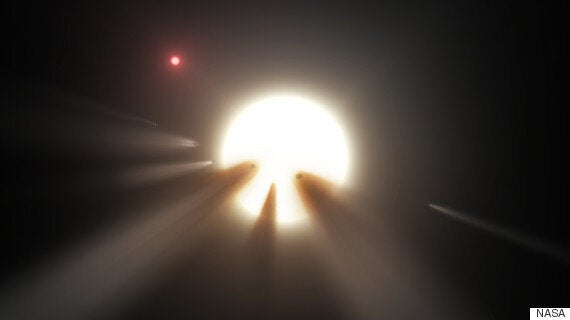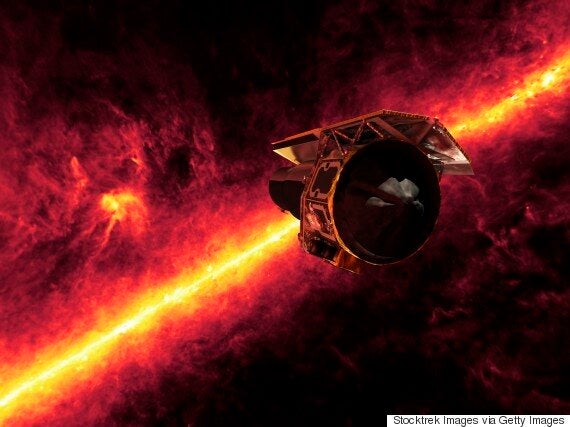When NASA's Kepler Telescope revealed that it had found what could have been an 'alien megastructure' orbiting a distant star, it didn't take long for both the wider community and the public to embrace what could have been our first glimpse at alien life.
Sadly, and as is usually the case, Kepler's scientists have been hard at work trying to ruin all our dreams and have come up with a more likely alternative.

Thankfully, this alternative is proving to be equally as strange as the first theory. Rather than being a large group of interconnected structures, researchers believe that the strange light coming from the star is because is being engulfed by a swarm of comets.
SEE ALSO:
- Neil DeGrasse Tyson: Aliens Could Have Already Decided We're Too Stupid
- Aliens Will 'Conquer And Colonise' Earth Stephen Hawking Claims
- Professor Brian Cox Suggests 'Aliens' Could Use KIC Star System To Power Their Civilisation
- NASA Kepler-452b 'Earth 2.0' Discovery Brings Us Closer To Discovering Alien Life
The root of the speculation arose when star KIC 846285's light output suddenly dimmed dramatically as though something massive had passed in front of it.
Bringing in reinforcements, the team at Kepler recruited the powerful Spitzer Space telescope which can view distant objects using infrared light.
The hope was that by cutting through the dust that was obscuring Kepler's original view, Spitzer would be able to draw back the curtains and reveal the truth.

Spitzer is able to view the universe through the infrared spectrum
What it found was absolutely nothing. No heat signatures, nothing, leading the researchers to only one possible explanation: comets.
It's believed that the light was blocked by a massive swarm of comets travelling in a long-distance elliptical orbit around the star. The light was then blocked by a massive comet leading the group.
Massimo Marengo of Iowa State University, Ames, who led the study points out that there's still plenty more mystery to unravel when it comes to KIC 846285.
"This is a very strange star," he said. "It reminds me of when we first discovered pulsars. They were emitting odd signals nobody had ever seen before, and the first one discovered was named LGM-1 after 'Little Green Men.'"
"We may not know yet what's going on around this star," Marengo observed. "But that's what makes it so interesting."